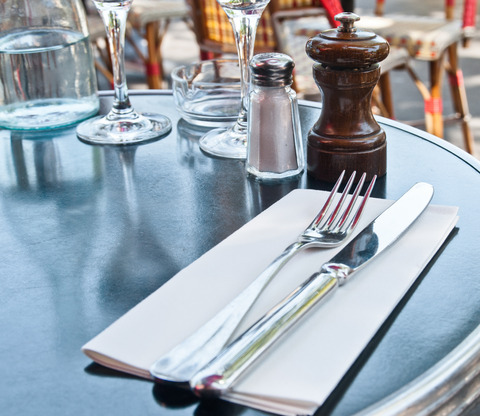If you are on a low sodium diet, it is pretty easy to control your salt intake as long as you prepare your food yourself. It is comparatively easy to learn what to use for cooking and how to shop.
The problem arises when you decide to dine out as you may be not able to control how much salt is used in the meal you order.
There are however some simple tips that will help you.
As a general rule it is recommended to choose:
- place that has low-sodium-dishes in their offer
- place that does not use monosodium glutamate (MSG)
- place that will be willing to custom-make a meal for you by substituting certain ingredients
Also:
- on a day when you dine out, try to balance your daily intake by having low-sodium-meals.
- opt for a la carte rather than set meal this will give you more choices
For starters try to avoid:
- soups and broths
- bread with salty buttery crust
- breaded items
- smoked meats and fish
As for vegetables, salads and greens:
- salads are great choice as long as you order them without pickles, bacon, croutons or cheese
- avoid salad dressing, use olive oil and vinegar instead
- if there is no olive oil nor vinegar, order salad dressing on the side and use just a bit
- Steamed vegetables and grilled vegetables are fine as long as served without any sauce
For main courses:
- meat or fish should be broiled, baked, grilled or roasted without breading
- order gravies and sauces on the side and use only a bit
- plain noodles and pasta are better choice than tortellini
- casseroles have usually lots of salty sauce
- avoid salty condiments and garnishes such as olives, pickles, parmesan or ketchup
Another reason not to use salt shaker in a restaurant
Recent research into table salt bought at supermarkets across China revealed disturbing presence of micro-sized particles of plastic among the grains of seasoning. The particles were the common water bottle polyethylene terephthalate, as well as polyethylene, cellophane, and a wide variety of other plastics (250 particles of plastic per lb of sea salt). The reason for this kind of contamination is due to the fact that salt is sourced from the ocean, which is highly polluted with plastics. At the same time salt sourced from briny lakes, briny wells, and salt mines has less particles (between 3 and 165 particles per lb of sea salt).
As long as it is possible to choose wisely the salt we buy for our home use, some restaurants may be tempted to buy the cheapest type of salt. If it happens to be the one produced in China, it may be contaminated. Be aware that this will apply to both – salt used for cooking in a restaurant kitchen as well as in a salt shaker.
Source:
http://pubs.acs.org/doi/abs/10.1021/acs.est.5b03163?source=cen
